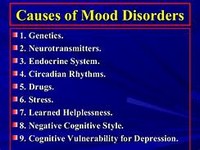
ALLERGIES FOOD
FOODS THAT HARM
Almost any food can provoke an allergic reactionEight foods that account for 90% of allergic reactions:
WHO’S AFFECTED
5 million Canadians
Food Allergies may not be as prevalent as some might think
It is estimated that almost one-third of people say that they, or a family member, have a food allergy
But, in fact, only 2 to 8% of children, and 1 to 2% of adults in the U
S
have clinically proven allergic reactions to food
Old School
A peanut allergy is a lifelong sentenceNew Wisdom
A blood test can measure peanut-specific antibodies and identify if someone has outgrown their allergyTrue food Allergies involve the body’s immune system, whereas food intolerance originates in the gastrointestinal system and is associated with an inability to digest or absorb certain substances
Doctors do not completely understand why so many people have Allergies , although heredity appears to be a major factor
If both parents have Allergies , their children will almost always have them as well, although the symptoms and allergens may be quite different
Food Allergies in infants and children, however, tend to lessen as they grow, and the problem may disappear by adulthood
There is no doubt that breastfeeding and the delayed introduction of solid foods reduces a child’s chances of developing food
Allergies
QUICK TIP:
And some cooks swap vegetable oil for a tropical oil such as coconut oil, which may be a concern for those allergic to coconut
Beyond the Diet
There are many symptoms of food Allergies , including nausea, vomiting, diarrhea, constipation, indigestion, headaches, skin rashes or hives, itching, shortness of breath (including asthma attacks), and, in severe cases, widespread swelling of the skin and mucous membranesSome people can tolerate small amounts of an offending food; others are so hypersensitive that they react to even a minute trace
Some allergens are easily identified because symptoms will develop immediately after eating the offending food
Cooking can often reduce the allergenic potential of foods, as proteins responsible for Allergies are degraded by heat
Keep a diary
If symptoms develop, chances are you have identified the offending food
In more complicated cases, allergy tests may be required
The most common is a skin test, but your doctor may also try RAST (radioallergosorbent test) blood study or a medically supervised elimination diet and challenge tests
Once allergens have been identified, eliminating those foods from the diet should solve the problem
But this can be more complicated than it sounds
Some of the most common food allergens are hidden ingredients in many processed foods
Also, many foods are chemically related; thus, a person allergic to lemons may also be allergic to oranges and other citrus fruits
In some cases, the real culprit may be a contaminant or an accidental additive in food
For example, some people who are allergic to orange juice may actually be able to tolerate the peeled fruit, since it is limonene (the oil in citrus peels) that produces the allergic reaction
WHAT IS ANAPHYLACTIC SHOCK
Severe allergic reactions to foods can result in anaphylactic shock, a life-threatening collapse of the respiratory and circulatory systemIf you have had, or believe you may be susceptible to an anaphylactic reaction, you should wear medical identification, and carry emergency medical information in your wallet
Your doctor may also recommend that you carry an epinephrine selfinjector (EpiPen)
Importance of well balance diet




